Kitchen Garden Planning, Part Two: Companion Planting, Design & Layout
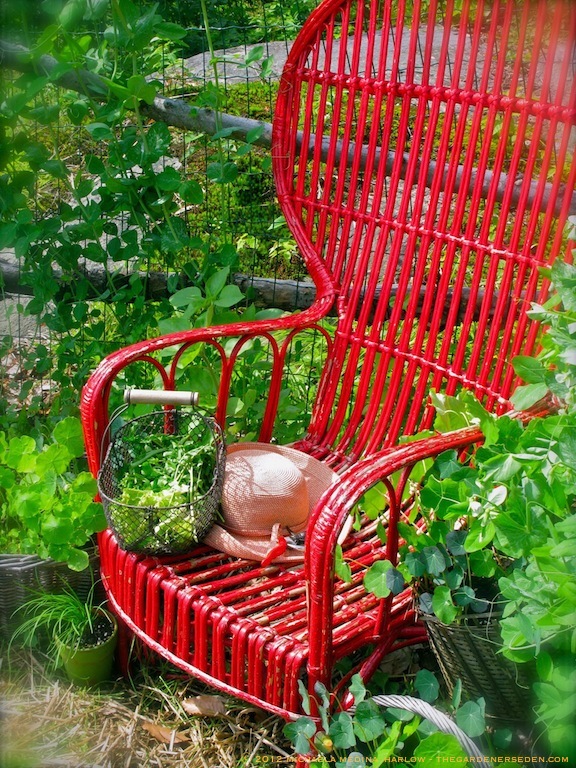 Â In the Company of Friends: My Potager is Planned for Companionship!
 In the Company of Friends: My Potager is Planned for Companionship!
Fresh air, sunshine, a cool drink and a warm, cozy spot in the garden, surrounded by friends; I can’t imagine a better way to spend my summer days. Turns out, plants feel much the same way we do. Like humans, plants tend to grow, thrive and produce best when they are provided the conditions and companions they prefer. Given the varying needs and desires of the fruits, herbs and vegetables on this year’s garden party guest list, I like to give the seating arrangement a little thought.
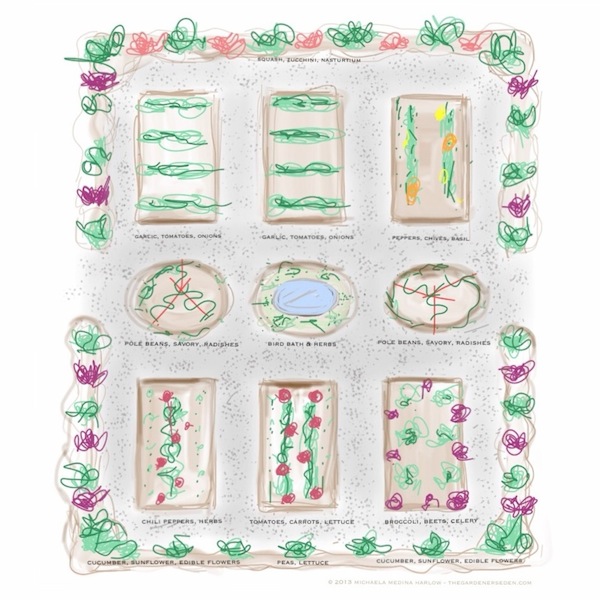 Â Sample Potager Layout with Cool & Warm Season Companion Plants
 Sample Potager Layout with Cool & Warm Season Companion Plants
Every spring, when it’s time to design and layout my potager, I pull out my garden journal and a fresh sheet of 1/4″ graph paper to sketch my seasonal planting beds. Now is the time to decide what crops I want to grow in my vegetable garden this year. First I list my favorite cold crops and then the summertime fruits, herbs and vegetables (see lists below). I also like to replant certain fast-maturing crops —such as lettuce, peas, beets and carrots— for autumn harvest, so I make a note to remind myself to sow again in late summer. When I head to the garden center to pick up my seed and six packs, I take my garden journal —or a copy of my client’s plan and plant list— along with me for reference.
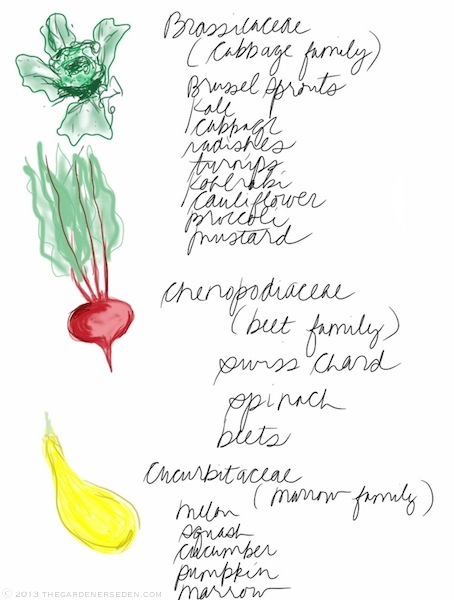

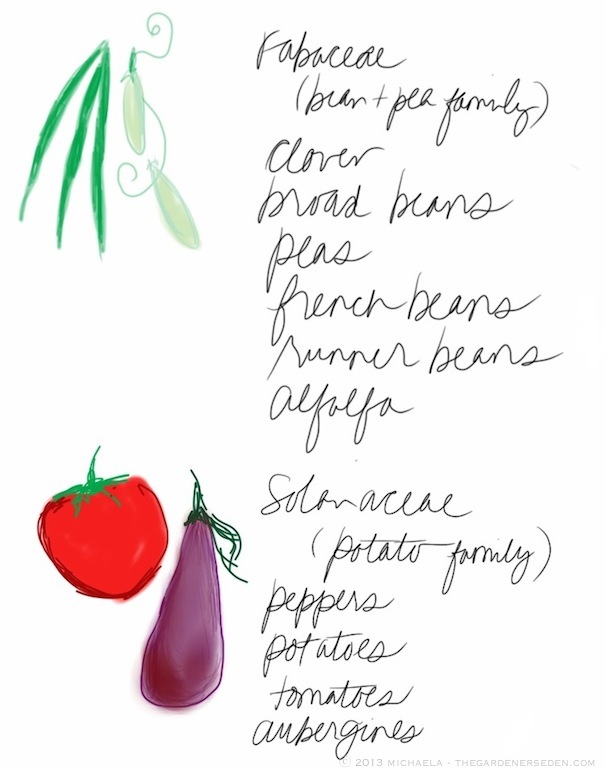
In my previous post —Kitchen Garden Planning, Part One— I mentioned the importance of a keeping a garden journal from year to year. One of the keys to successful, organic vegetable gardening is crop rotation. Insect pests and diseases can be diminished by planting vegetables from the same families —see the basic groupings below— in different locations each year, following a three year cycle.
Here’s a simplified list of vegetable families to serve s a basic rotation guide, from Cornell’s Cooperative Extension Service Online. Avoid planting the same vegetables —or those within the same families— in the same spots next year by keeping a record of what is planted where, this year.
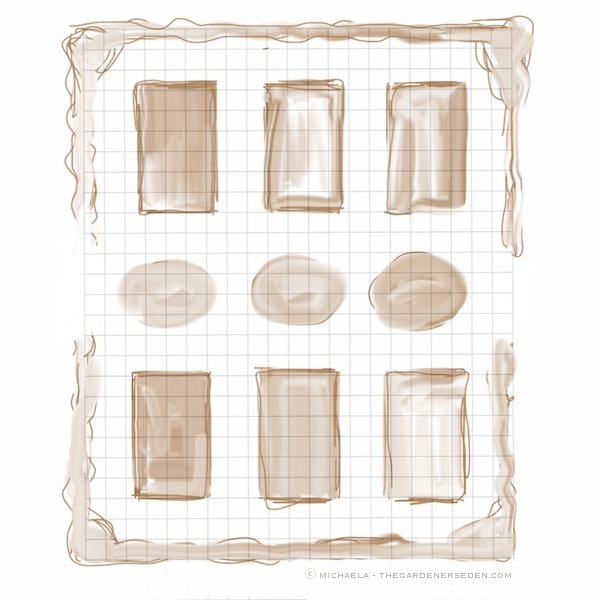 Â Step One: Layout Planting Beds on 1/4″ Graph Paper
 Step One: Layout Planting Beds on 1/4″ Graph Paper
In addition to assisting with crop rotation, laying out a garden plan on grid paper can help to maximize available area; particularly in small gardens, where space is at a premium. Keeping diagrams and written records of where you have sown/planted what vegetables can assist with intercropping (planting different herbs, fruits, flowers and vegetables —such as basil, carrots and tomatoes— within the same beds, instead of planting long rows of just one kind of vegetable), and succession planting (repeat sowing quick-to-mature crops like lettuce, peas and spinach). By continuously replanting and filling all voids, weeding tasks are reduced and high yields can be obtained from even the smallest garden.
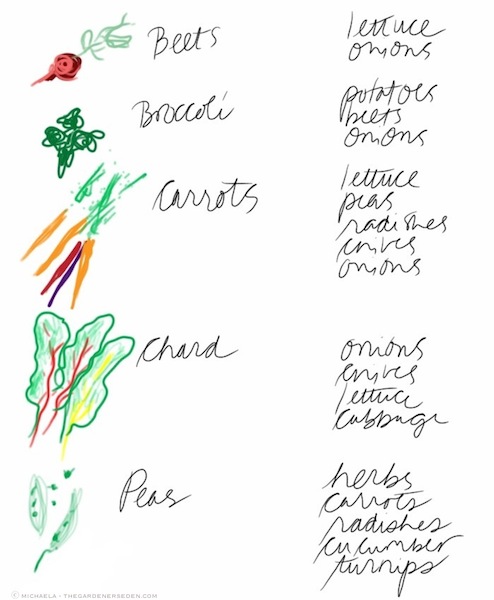 Â Common Cool-Season Crops and Selected Companions
 Common Cool-Season Crops and Selected Companions
When laying out my annual vegetable garden, first I list my favorite cold crops and then the summertime fruits and vegetables. Mesclun greens, arugula, lettuce, chard, beets, carrots, radishes, broccoli and peas? Those all-time favorites are definitely on my spring planting list. I also like to replant certain crops for a late autumn harvest. Fast-maturing, cool-season crops —such as lettuce, peas, radishes, spinach, beets, broccoli, lettuce and others— can be planted early in the growing year and repeat sown over the course of several weeks (succession planting), or replanted later in the season for autumn harvest, making use of newly open space as crops mature throughout the summer.
Next, I need to think about the summer crops, and plan space for those as well. Some warm season crops can be planted earlier in the season than others; think potatoes and onions. Once the threat of frost has passed, I’ll plant summertime favorites like tomatoes, basil, zucchini, squash, melons, sweet and spicy peppers, all kinds of beans, cucumbers, pumpkins and gourds. Keep in mind that the growth of warm-season and slow-to-mature crops can be assisted by intercropping with helpful companions. Some of the more common cool and warm season crops, and good companion plants for interplanting, are listed in the illustrations above, and below.
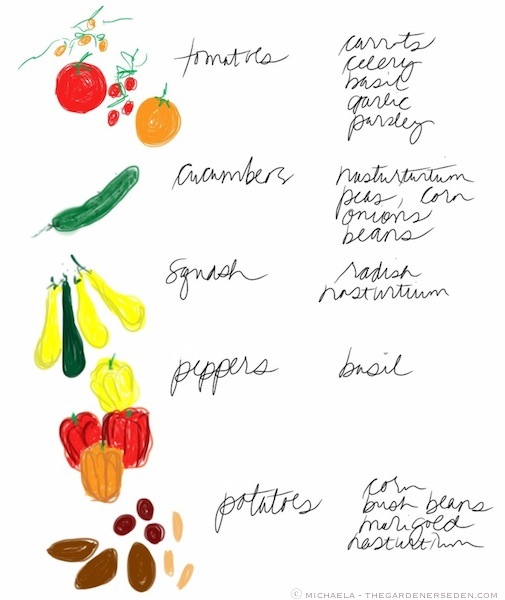 Â Common Warm-Season Crops and a Few Good Companions
 Common Warm-Season Crops and a Few Good Companions
Many flowers and herbs have protective properties that keep pests and diseases to a minimum my vegetable garden. For example, sage (Salvia officinalis) is protective to Brassicaceae (cabbage family), against the cabbage butterfly and to Apiaceae (carrot family), against carrot fly. Try growing herbs in an amongst vegetables, rather than separated in an herb garden. Flowering herbs will also attract pollinators, which help nearby fruits. In addition to providing beauty and assisting with pollination, growing flowers, such as marigold (Calendula), can help deter pests like eelworms (plant-parasitic nematodes).
Interested in learning more about the benefits of companion planting and intercropping? I own and highly recommend Louise Riotte’s Carrots Love Tomatoes: Secrets of Companion Planting for Successful Gardening,and Ed Smith’s The Vegetable Gardener’s Bible.
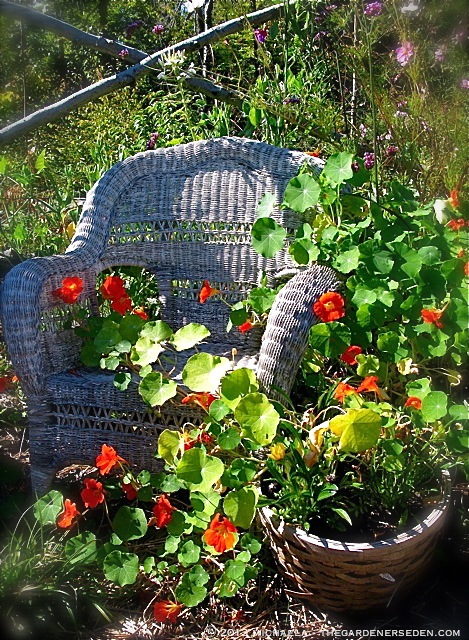 Â In My Own Garden, I Like to Grow Herbs and Edible Flowers in and Amongst the Fruits and Vegetables
 In My Own Garden, I Like to Grow Herbs and Edible Flowers in and Amongst the Fruits and Vegetables
Photography, Illustration & Text â“’ Michaela Medina Harlow/The Gardener’s Eden. All images, articles and content on this site (with noted exceptions), are the original, copyrighted property of The Gardener’s Eden and may not be reposted, reproduced or used in any way without prior written consent. Contact information is in the left side bar. Please do not take my photographs without asking first. Thank you!Â
Do you enjoy The Gardener’s Eden? You can help support this site by shopping through affiliate links. A small percentage of each sale will be paid to this site, helping to cover web hosting and maintenance costs. Thank you so much for your support!

2 Replies to “Kitchen Garden Planning, Part Two: Companion Planting, Design & Layout”
Comments are closed.
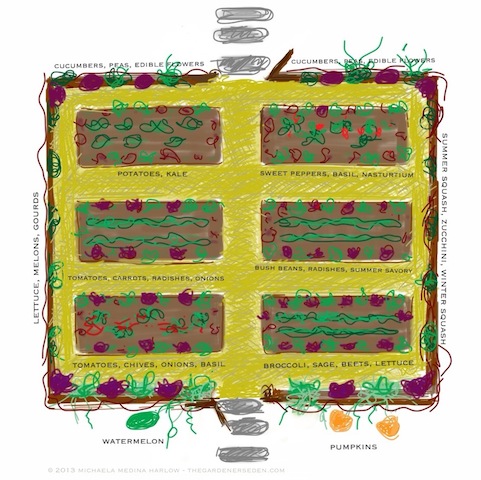

This a very helpful post. Thank you!
Hello Paula, I’m so glad this information is useful to you! Happy spring gardening ;) xo M